2016 Kawasaki Z800 ABS First Ride Review

A European hit comes to America
I have a confession to make: I rode the Kawasaki Z800 in 2013, long before its U.S. introduction in Palm Springs, California this week. It was on a test track in Southern Italy during a new tire introduction, and despite the fact the track is not the Z800’s element – Kawasaki bills the baby Z as a streetfighter ideally suited for commuting or weekend blasts in the canyons – I came back pleasantly surprised. I remember the spread of power was impressive, the completely analog transmission shifted with buttery-smooth precision, the brakes never faded and the chassis was fluid and responsive. I wanted one but left Italy disappointed that I wouldn’t be able to get my hands on a Z800 stateside.
2016 Kawasaki Z800 ABS
| Engine | 17.0/20 |
| Suspension/Handling | 12.0/15 |
| Transmission/Clutch | 7.5/10 |
| Brakes | 8.0/10 |
| Instruments/Controls | 3.5/5 |
| Ergonomics/Comfort | 9.0/10 |
| Appearance/Quality | 8.5/10 |
| Desirability | 8.0/10 |
| Value | 8.5/10 |
| Overall Score | 82/100 |
Fast forward to today with the naked streetfighter class gaining in popularity. According to Kawasaki market research, within the past five years, sales in the midsize segment of the Standard category have been growing rapidly. Quicker, even, than the open-class Standards. It’s easy to see why when the bikes like the MV Agusta Brutale 800 ($12,798), Ducati Monster 821 ($11,595), Suzuki GSX-S750 ($7,999), Triumph Street Triple ($9,400) and Yamaha’s FZ duo – the FZ-09 ($8,190) and FZ-07 ($6,990) – all occupy a similar space.
It’s a crowded landscape to join, but Kawasaki realized it had just the weapon for the job, both in terms of cost and performance, in the $8,399 Z800 ABS – and it’s been residing in Europe (and Australia and New Zealand) for the past two years. Finally, the little Zed is coming to America – as a 49-state model! – for 2016. That’s right, the Z800 ABS won’t be sold in California, but Kawi reps stated a request has been made to Japan to make the bike 50-state legal ASAP. Nonetheless, the bike is here now, and while the engine has roots to the pre-2010 Z1000 (which itself had roots dating back to the 1990s), a more accurate view would be to see it as the successor to the previous Z750, a motorcycle which, Kawasaki says, sold more than 160,000 units worldwide during its 10-year run from 2003 to 2013.
Nuts and Bolts
Calling it an 800 is actually doing the Z a slight disservice, as the DOHC inline-Four is 806cc, the result of an increased bore over the 750 (71.0mm vs. 68.4mm). Stroke stays the same at 50.9mm. Compression ratio is a relatively high 11.9:1, with 34mm Keihin throttle bodies feeding the air/fuel mixture. To help bolster midrange power, intake and exhaust ports are tweaked over the 750: intake ducts grow in length (41.5mm from 36.5mm) and the intake funnels themselves are changed – the two inner funnels are longer than the outer units. Exhaust headers 1 and 4 are connected as well as headers for cylinders 2 and 3, also in an effort to maximize torque.
Kawasaki engineers also went through the trouble of updating or revising a plethora of components inside the engine. These include lighter pistons compared to the 750, bigger oil jets, and bigger crankshaft journals, just to name a few. Kawi Europe has the bike rated at 111 hp, with published reports online stating rear-wheel numbers hovering just below the century mark.
Chassis-wise, the 800 is based on the steel backbone frame of the 750, with reinforcement and rigidity added in the form of twin spars that extend down both sides of the engine, visually dividing the head from the block. The two sides then connect in the middle, between the block and the headers. Of course, this is all cleverly disguised in minimal bodywork that accentuates the Z800’s streetfighter intentions. A cast aluminum subframe helps lighten the rear end, but the swingarm is steel.
As a result of the steel frame and swingarm, the Z800 is a heavy bike, with Kawi rating it at 509.4 lbs wet. For reference, the 800’s bigger brother, the Z1000, is rated at 487.3 lbs on both the MO scales and the ones at Team Green HQ. For a more in-depth look at how the Z800 matches up to some of its closest (and not-so-close) rivals, check out the spec chart later on in this story.
Suspension duties are handled via 41mm KYB fork and rear shock, both ends only adjustable for spring preload and rebound damping. Unlike the Versys and Z1000, the Z800’s shock is mounted vertically, though its reservoir is horizontal. Four-pot calipers are not radial-mounts, but they are clamping on petal-type discs, 277mm in diameter on each side. A single 216mm petal disc rests out back, squeezed by a single-piston caliper. ABS, as the Z800 ABS names implies, comes standard and is always on. Otherwise, the Zed is void of all the other gizmos found on today’s motorcycles. There’s no traction control, quickshifter, power modes, or anything else. It’s just man (or woman) and machine.
Riding Impressions
Since the Z800 ABS is not available for sale in California, the irony of having its intro in Palm Springs wasn’t lost on anyone. However, the locale proved to be an ideal setting, as its close proximity to highways and canyon roads mimics what most users will use the bike for. Having polled Z1000 owners on their primary usage, Kawasaki learned that half of owners use their Zeds for commuting purposes, while another 39% primarily played in the twisties. Thus, our ride would be a good chance for the 800 to shine in its natural environment.
Since my initial encounter with the Zed was on a racetrack, its street manners were completely foreign to me. And since this was two years ago, some of the finer details have slipped my mind, too. Within the first few miles of riding I was reminded of the 800’s healthy midrange grunt. The Kawi pulls from idle to around 8,000 rpm – where most street riders will spend the vast majority of their time on the Z.
Power starts to taper once you get closer to its 12k redline, but with a quick release of the throttle and firm flick of the toe, the next gear is quickly engaged and the bike keeps pulling. Power delivery is smooth and there’s hardly a vibe felt through the bars, but then again, I’ve been riding BMW’s S1000XR for the past several weeks. When placed side-by-side with the paint mixer wedged in the Beemer’s engine bay, the Z800’s Four feels divine in comparison.
It’s hard to draw a fault with the 806cc Four, other than a generic niggle we’ve expressed in the past about inline-Fours: their sound. Three cylinders wail their beautiful melody at full song, V-Twins have their distinctive burble, and Yamaha’s crossplane Four sounds downright mean when you get on it. The Z fails to inspire in quite the same way, but still has no trouble hustling down the road.
Ergos are well suited for the street rider who likes to hit the canyons on the weekend. The rider triangle is sporty, but not overly so. For my 5-foot, 8-inch frame the pegs aren’t too high, the knees don’t spread too far, and the upper body tilts forward just a little. Combined with the smooth and punchy engine, it would be easy to envision the Z as a practical commuter. It even has hooks on the license plate holder to attach bungee cords! If it were mine, I’d find a way to add a little more padding in the seat cushion; my nether regions got a little sore after about 45 minutes.
Of course another way to get some blood flowing down there and forget about the seat is to hit the twisty stuff. Despite weighing a claimed 509 pounds, the Z800 ABS handles high-speed sweepers with confidence and rolling direction changes fluidly, the bars wide enough to provide a firm dose of leverage. It’s during quick transitions where one really thinks about putting the Zed on a diet. Though the suspension is only adjustable for spring preload and rebound damping, it felt well composed right from the start. Braking power from the four-pot Nissins is good, but I’d stop short of calling it great. I’d prefer a touch more initial bite. Though I did appreciate the adjustable brake lever.
Better Late Than Never
Two years ago I was saddened by the fact I wouldn’t be able to swing a leg over the Z800 Stateside. Now that I finally can (sorta, 49-state bike and all) I’m pleased to know my two-year-old memories haven’t been clouded by time. The problem is that the competition has upped their game as well. Suzuki’s GSX-S750 presents maybe the closest challenge to the Kawi, their $400 price difference making them really well matched, but the excitement offered by the three-cylinder engines in the Triumph Street Triple and Yamaha FZ-09 is hard to ignore.
At $8,400, the Kawasaki Z800 ABS is a great deal in the category and provides the many riders out there who hate the tech in today’s bikes an outlet (we know you’re out there, we read the comments section). It’ll haul ass if you want it to, yet also be perfectly at home strafing through town on the way to work or school. We’ll be bringing all of these contenders together to sort out who’s tops on our list, but in the meantime know you can’t go wrong with the Z800 ABS.
+ Highs
- Broad spread of torque
- Comfy ergos for commuting or hitting the canyons
- Affordable
– Sighs
- Seat’s a little thin
- Could stand to lose a few pounds
- Only 49-state legal
Kawasaki Z800 vs. Rivals specs | |||||||
|---|---|---|---|---|---|---|---|
| Kawasaki Z800 | Suzuki GSX-S750 | Yamaha FZ-09 | Triumph Street Triple | Honda CB1000R | Kawasaki Z1000 | MV Agusta Brutale 800 EAS ABS | |
| MSRP | $8,399.00 | $7,999.00 | $8,190.00 | $9,400.00 | $11,760.00 | $11,999.00 | $12,798.00 |
| Engine Type | 806cc liquid-cooled, 4-cylinder | 749cc, 4-stroke, liquid-cooled, 4-cylinder | 847cc liquid-cooled inline 3-cylinder | 675cc, liquid-cooled, 3-cylinder | 999cc, liquid-cooled, 4-cylinder | 1043cc, liquid-cooled, 4-cylinder | 798cc, liquid-cooled, 3-cylinder |
| Fuel System | EFI | EFI | EFi | EFI | EFI | EFI | EFI |
| Valve Train | DOHC, four valves per cylinder | DOHC, four valves per cylinder | DOHC, four valves per cylinder | DOHC, four valves per cylinder | DOHC, four valves per cylinder | DOHC, four valves per cylinder | DOHC, four valves per cylinder |
| Horsepower | 111 hp (Claimed Europe) | 96.1 hp @ 10,300 rpm | 104.6 hp @ 9,800 | 92.5 hp @ 12,100 rpm | 107.1 hp @ 10,100 rpm | 124.0 hp @ 10,400 rpm | 117.0 hp @ 11,800 rpm |
| Torque | 60 lb-ft. (Claimed Europe) | 51.7 lb-ft @ 8,900 | 59.3 lb-ft @ 9,700 rpm | 44.2 lb-ft @ 8300 | 63.6 lb-ft @ 7,200 rpm | 71.6 lb-ft @7,900 rpm | 57.1 lb-ft @ 9000 rpm |
| lb/hp | 4.59 | 4.80 | 3.90 | 4.36 | 4.53 | 3.93 | 3.97 |
| lb/torque | 8.49 | 8.80 | 7.00 | 9.12 | 7.63 | 6.80 | 8.14 |
| Transmission | 6-Speed | 6-Speed | 6-Speed | 6-Speed | 6-Speed | 6-Speed | 6-Speed |
| Final Drive | Chain | Chain | Chain | Chain | Chain | Chain | Chain |
| Front Suspension | 41mm inverted fork; adjustable preload and rebound damping; 4.7-in travel | Inverted telescopic, coil spring, oil damped | 41mm fork; adjustable preload and rebound damping; 5.4-in travel | Kayaba 41mm inverted fork; non-adjustable; 4.3-in travel | 43mm inverted fork; adjustable preload, rebound and compression damping; 4.3-in travel | 41mm inverted SFF-BP fork with stepless compression and rebound damping and spring preload adjustability; 4.7-in travel | 43mm Marzocchi inverted fork; adjustable preload, rebound and compression damping; 4.9-in travel |
| Rear Suspension | Bottom-link Uni-Trak horizontal shock with piggyback reservoir; adjustable preload and rebound damping; 5.4-in travel | Link type, coil spring, oil damped | Single shock; adjustable preload and rebound damping; 5.1-in travel | Kayaba shock; adjustable preload; 4.9-in travel | Single shock; adjustable preload and rebound damping; 5.0 in travel | Horizontal shock; adjustable preload and stepless rebound damping; 4.8 in travel | Sachs single shock; adjustable preload, rebound and compression damping; 4.9-in travel |
| Front Brake | Dual 277mm petal-type rotors, four-piston calipers, ABS | Disc brake, twin | Dual hydraulic disc, 298mm | Dual 310mm discs, Nissin two-piston calipers, switchable ABS | Dual 310mm discs with radial-mount 4-piston calipers | Dual 310mm petal-type rotors with radial-mount four-piston monobloc calipers, ABS | Dual 320mm discs, Brembo radial-mount four-piston calipers |
| Rear Brake | Single 216mm petal-type disc, single-piston caliper, ABS | Disc brake | Hydraulic disc, 245mm | Single 220mm disc, Brembo single-piston caliper, switchable ABS | Single 256mm disc | Single 250mm petal-type disc, single-piston caliper, ABS | Single 220mm disc, Brembo two-piston caliper |
| Front Tire | 120/70-17 | 120/70-17 | 120/70-17 | 120/70-17 | 120/70-17 | 120/70-17 | 120/70-17 |
| Rear Tire | 180/55-17 | 180/55-17 | 180/55-17 | 180/55-17 | 180/55-17 | 190/50-17 | 180/55-17 |
| Wheelbase | 56.9 in | 57.1 in | 56.7 in | 55.5 in | 56.9 in | 56.5 in | 54.3 in |
| Seat Height | 32.8 in | 32.1 in | 32.1 in | 31.5 in | 32.1 in | 32.1 in | 31.9 in |
| Measured Weight | 509.4 (Claimed) | 464.7 lbs | 416.2 lbs | 403 (R model) | 485.0 lbs | 487.0 lbs | 465.0 lbs |
| Fuel Capacity | 4.5 gal | 4.6 gal | 3.7 gal | 4.6 gal | 4.5 gal | 4.5 gal | 4.4 gal |
| Tested Fuel Economy | NA | 36.9 MPG | 35.9 MPG | 32.5 mpg | 37 mpg (Claimed) | 36.3 mpg | 37.5 MPG |
| Available Colors | Metallic Spark Black/Flat Ebony | Metallic Matte Black No. 2 | Cadmium Yellow, Matte Silver, Matte Grey | Phantom Black, Diablo Red, Crystal White | Black/Red | Metalic Matte Graphite Gray/Golden Blazed Green | Pearl Ice White/Sand Metallic Grey, Red/Silver, Matt Avio Grey/Matt Metallic Black |
| Warranty | 12 month limited warranty | 12 month unlimited mileage limited warranty. | 1 Year (Limited Factory Warranty) | NA | NA | 12 month limited warranty | NA |

Troy's been riding motorcycles and writing about them since 2006, getting his start at Rider Magazine. From there, he moved to Sport Rider Magazine before finally landing at Motorcycle.com in 2011. A lifelong gearhead who didn't fully immerse himself in motorcycles until his teenage years, Troy's interests have always been in technology, performance, and going fast. Naturally, racing was the perfect avenue to combine all three. Troy has been racing nearly as long as he's been riding and has competed at the AMA national level. He's also won multiple club races throughout the country, culminating in a Utah Sport Bike Association championship in 2011. He has been invited as a guest instructor for the Yamaha Champions Riding School, and when he's not out riding, he's either wrenching on bikes or watching MotoGP.
More by Troy Siahaan



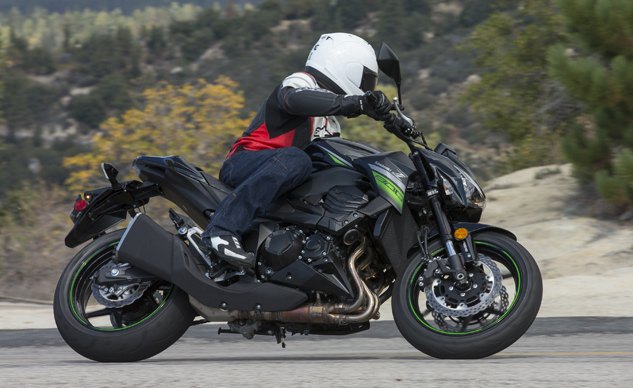
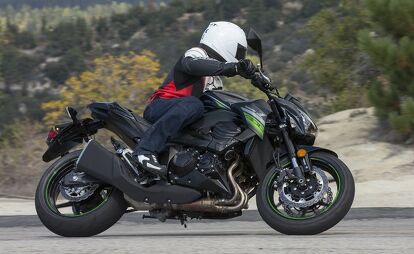











































































































































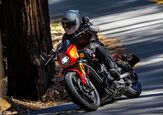
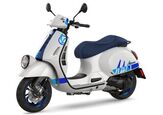
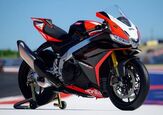
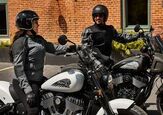
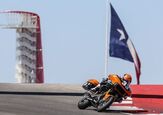

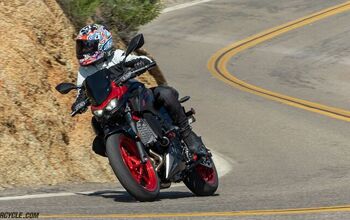
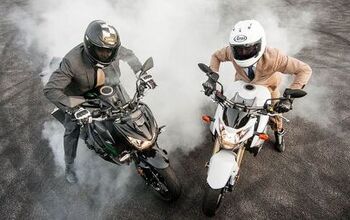
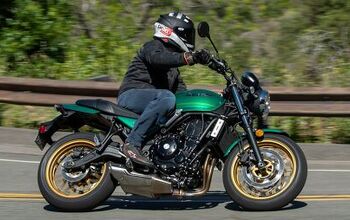
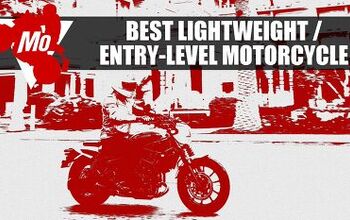
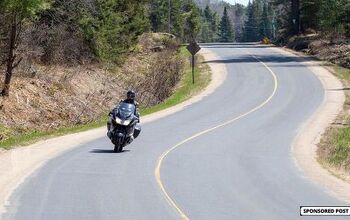
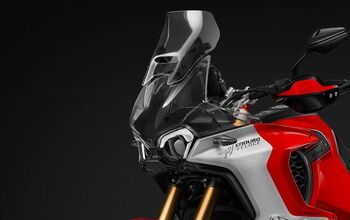
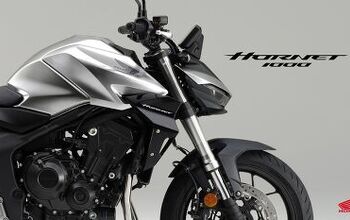

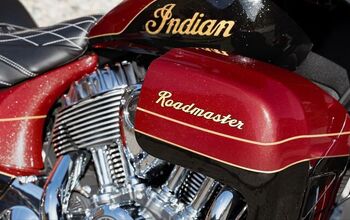

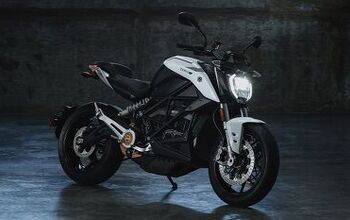

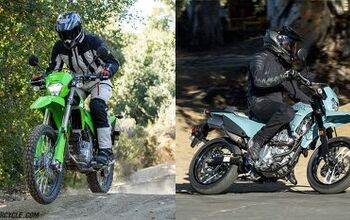
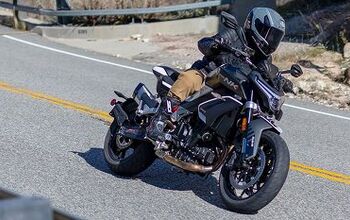
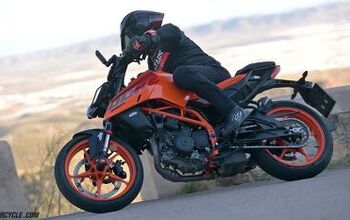
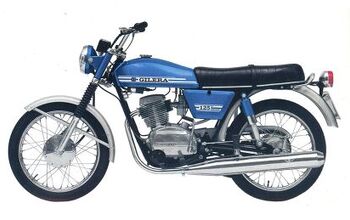
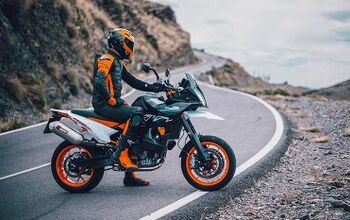
Comments
Join the conversation
If they just swapped out the steel frame and swing arm with an aluminum alloy one and dropped the weight below 470, they would have a real winner that would be much more competitive! The FZ-09 and Street Triple weigh about a hundred pounds less. That being said, this is a 2 year old model.
I hope they come out with an updated version that keeps all the good stuff, and drops a bunch of weight.
Its hard to accept the idea that its heavier and less powerful then the z1000, being a smaller displacement you understand its less powerful but you would expect it to be lighter, not heavier, thats not good...